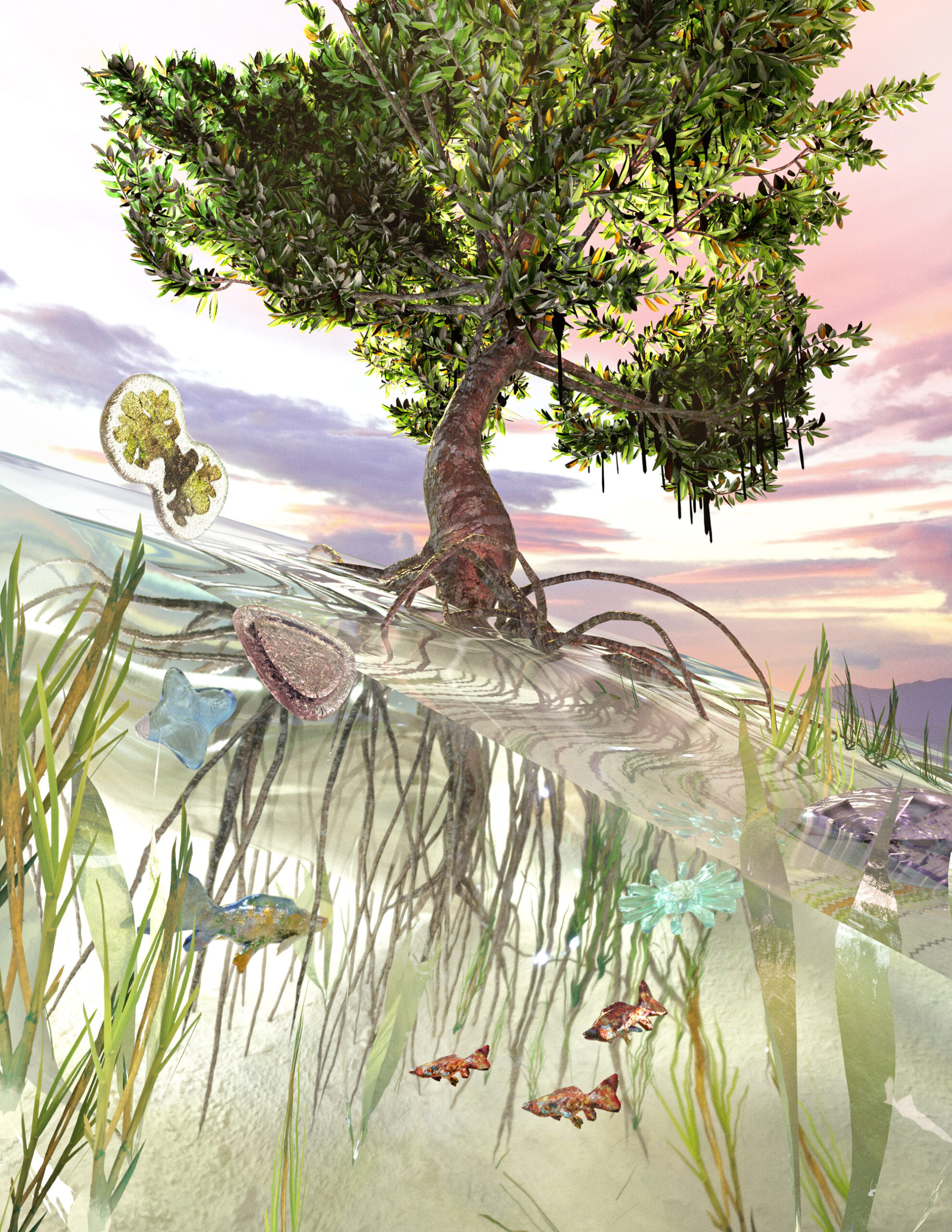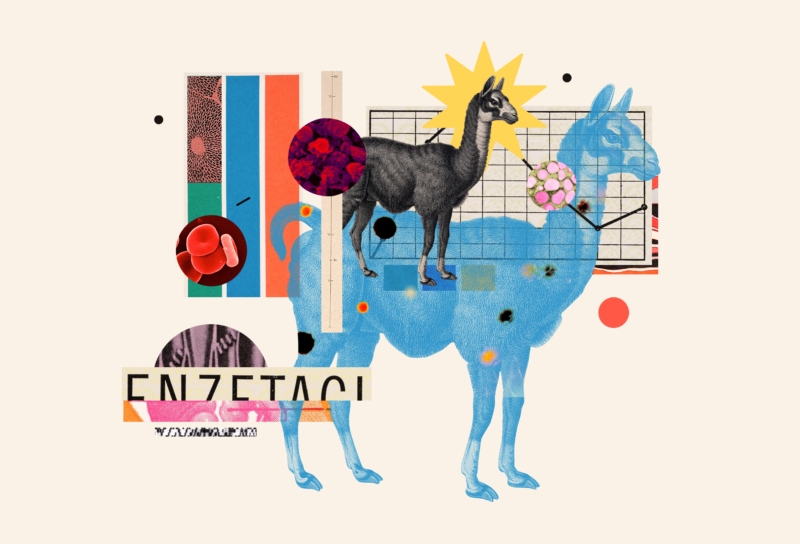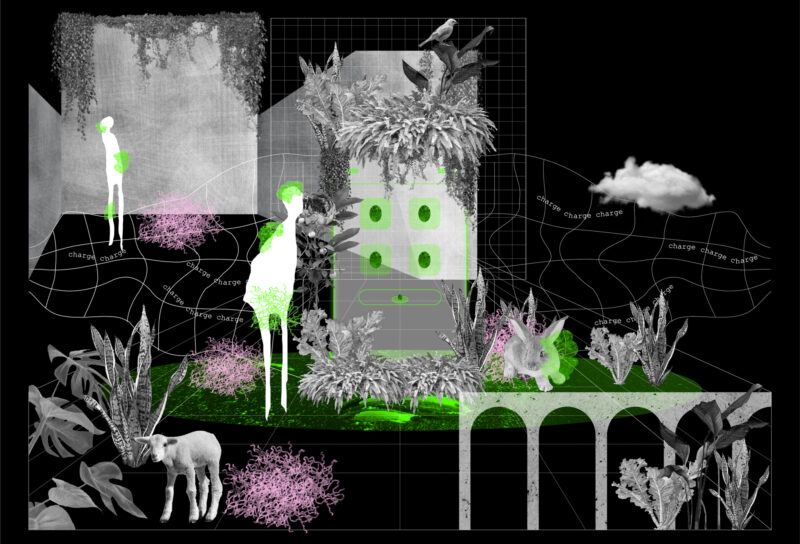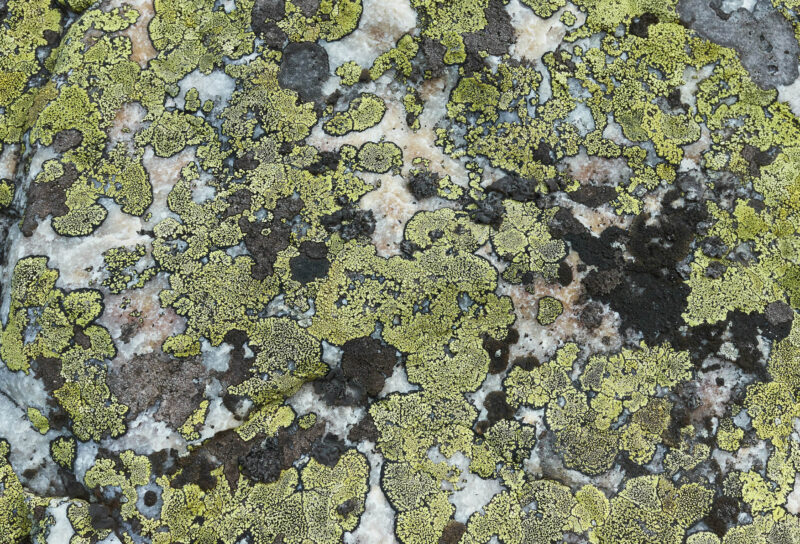Keeping up with climate news makes for a punishing existence. What are you supposed to do with the knowledge that each day in July sets a new temperature record, that coastal cities will become uninhabitable, and that our entrenched political parties no longer even pretend to offer hope of adequate solutions?
Hopelessness may seem like a natural response to this — it might even seem radical — but in the long run, on a mass scale, it just feeds the self-fulfilling prophecy of climate dystopia. Succumb to it fully and you become part of the problem.
Perhaps, then, we’ve been doing it all wrong. Instead of doom-scrolling, we should be devoting our mental energies to imagining alternative outcomes. Having hope is what’s actually radical.
If this resonates with you, then the world in “Dear Alice,” the Chobani ad that recently electrified a sci-fi subculture called Solarpunk, might too. After a fan edited out every brand label on the milk and yogurt products being advertised, it revealed a stunning vision for a future lying underneath: people living in a rolling, green landscape powered by renewable energy, under a new social order that successfully averted climate change.
Adherents of Solarpunk believe that their movement could be the catalyst of such a paradigm shift. The term “Solarpunk” was coined in 2008 by a blogger suggesting a new literary genre, building on steampunk and centered around technologies like wind and solar power. It would go on to inspire a new popular aesthetic, and resonate through a growing list of art pieces, novels, and films (even ones that preceded the term’s coining, like Hayao Miyazaki’s Castle in the Sky). The questions it asks — “What does a sustainable civilization look like, and how can we get there?” — have grown to encompass a generation’s response to climate change. Against the pervasive cynicism and despair, Solarpunk invites us to imagine a future worth fighting for.
The first part of that invitation (“What does a sustainable civilization look like?”) is easier to imagine: humans make friends again with the natural world; fossil fuels are replaced by bountiful solar and wind energy; urban cityscapes and robotics mesh cleanly with a green and verdant world; we all become happy gardeners. The second clause (“how do we get there?”) has proven more elusive. One thing most adherents can agree on is the rejection of capitalism, the root cause of ecological cataclysm, and an embrace of anarcho-socialism and other forms of community building. There are also signs of a widespread preference for farm-to-table permaculture and handmade crafts.
Art that envisions skyscrapers intertwined with trees and gardens seems to imply that the only thing standing between us and an ecological life is better landscaping.
The proposed transitional solutions — adopting sustainable energy, urban gardening, and a general return to life before industrialization — are optimistic. And still, they are simply not enough to defeat climate change and the systems that created it on their own. Solarpunk writers and artists often imagine cities rising from hills as an extension of native ecology. This kind of soft utopia leaves out what kind of technology, if any, could balance our human bioload with the ecosystem outdoors. The amount of livestock we raise currently outnumbers wildlife tenfold. Art that envisions skyscrapers intertwined with trees and gardens seems to imply that the only thing standing between us and an ecological life is better landscaping. Solarpunk starts with optimism, justice, and post-capitalism, and ends with a radically sustainable world. The only little thing missing is a roadmap that could take us from one to the other.
Seizing on the enthusiasm surrounding Solarpunk, green technology companies have proposed their own technologies as the missing steps between climate dystopia and Solarpunk utopia. Synthetic biologists, who share the Solarpunks’ preference for the messiness of natural life, have done this with particular zeal. The CEO of the company that funds this magazine has tweeted: “Synthetic biology will give us a Solarpunk future and I’m here for it.”
This shouldn’t be seen as just a cynical ploy, but also a recognition of shared interests. Biological problems — how to feed a planet, how to save the oceans, how to face ecological upheaval — will certainly require biological solutions. Synthetic biology could have a lot to contribute to a radically sustainable world.
Born from genetic circuits and metaphors about programming biology, the young mega-industry is beginning to make a practical impact. In replacing fossil fuel products with eco-friendly alternatives, many of its startups champion ideas for new biotech in the fight against climate change. And yet, on its current trajectory, synbio is not taking us to a Solarpunk destination. Practitioners in the field who are serious about contributing to a radically different future — one where our desires, our technology, and our reality converge on the same timeline — should be doing all they can to push their industry to reevaluate its priorities. To meet the needs of the natural world, and the humans who live there, synthetic biology must modify itself.
What if we could grow everything?
In the early 2000’s, making cheaper biofuel was the first obvious commercial application of gene editing. Dozens of new startups dedicated themselves to creating yeast or E. coli that could turn sugar into oil. But come 2014, plummeting gas prices drove many of these businesses into the ground. Some companies were able to survive by pivoting away to making other products, like perfume. Petroleum, of course, is more than fuel— it’s also the raw material for everything from plastics to pigments. Today, you can pack for a backcountry skiing trip with alternatives made by biology. Wonder Alpine is a new winter sports line that makes equipment from algae-based bioplastic. Thanks to genetically modified fungi, you can moisturize with vegan collagen lotion, keep warm with a parka spun from microbe “brewed” silk proteins, and grab plant-based burgers and milkshakes that taste like the real thing.
One lesson from the heyday of biofuels is the difficulty of turning biological inventions into a practical product. One way for new companies to survive is to start with high-end targets, buying time and experience for how to go mainstream. Last year, UPSIDE Food’s cell-cultured chicken debuted not in freezer-aisle dino nuggets, but at Atelier Crenn, a three Michelin-star restaurant in San Francisco. Meanwhile, synbio debuts in sustainable fashion by partnering with brands on the runway. At Paris Fashion Week, you might spot an Hermes handbag made from fungi, a Sacai T-shirt containing spider silk, and a bioengineered faux leather trench coat for Balenciaga.
It remains to be seen which luxury, eco-friendly products will eventually become the default option. A 2020 McKinsey report estimated that the market for bioengineered products would exponentially grow to trillions of dollars in the next two decades. Far beyond its early growing pains, synbio aims to supplant the fossil fuel economy by outcompeting it — either with cheaper and better products, garnering more consumer demand, or by becoming the only option left.
While Solarpunk aims to overthrow capitalism to solve climate change, green startups are steeped squarely in the market, and instead serve as an argument for trimming its excesses.
Synbio for all
Halving greenhouse gas emissions worldwide by 2030 is the only way to keep global warming before the tipping point. But last year, global emissions still rose 6%. Once we pass the global temperature rise of 1.5°C, climate change becomes quasi-unstoppable. Ranges of plants and animals pull back from the equator; pestilence spreads; wildfires and melting permafrost release more greenhouse gasses; critical ecosystems like coral reefs completely disappear; extreme weather devastation becomes the new normal. At current trajectories, come 2050, we’ll have enough emissions to warm the planet by 2°C with 2 billion more people to feed.
Without the centuries of R&D that fossil fuels have enjoyed, it’s unlikely for synthetic biology to oust the incumbents quickly enough. While startups chip away at creating a tastier vegan burger, climate change is already, literally, setting London on fire. By the time scientists emerge with mature technology, most of the emissions we’ll ever release will already be in the atmosphere.
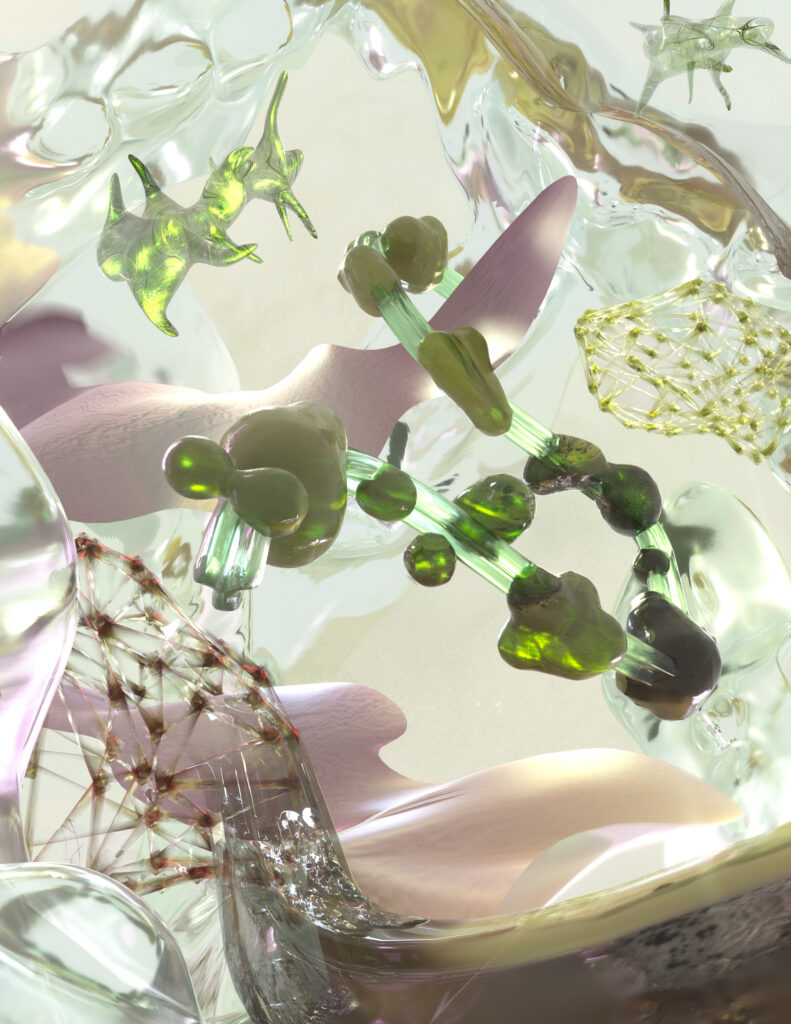
Surviving climate change has much less to do with what we consume on a day-to-day basis, and much more to do with the biosphere that we draw our food and lives from. Bioengineered or not, purchasing power isn’t strong enough. No matter how corporate brands try to align with the right values, only the end of capitalism can allow for a sustainable future.
In the Solarpunk counterculture, we see rebellions like guerrilla gardening, where people trespass to sow seeds in property they don’t own. They reclaim a concrete jungle with native plants, provide fresh food for the local community, and challenge who really owns the land. Meanwhile, synthetic biology strives to be in the green. In making products that look, taste, and feel like what we’re used to, scientists fastidiously build and rebuild the Ship of Theseus plank by plank. To change course, there needs to be a blueprint for an entirely new kind of vessel; navigating foreign seas requires a new culture of research motivations.
That new culture must be bigger than buying sustainable alternatives to common products. The answer won’t come from within the confines of consumerism. We should instead look to biological forces that drive all life on this planet: microbes. It’s a radical change in vantage point. What is it like to engineer biology where the product is not defined by what we can do for us, but by what we can do for it?
Invisible rewilding
While you may have heard that burping cattle are one of the largest producers of methane, the gas-generating archaea that live in their guts are really the creatures to blame. Sometimes, the symbiosis between host and microbiome is so seamless that it’s only noticeable when it breaks down. Unlike a neglected houseplant turning yellow, coral bleaching is triggered suddenly. The colorful, symbiotic algae inside coral flee during heat waves, leaving behind white skeletons. One of the most productive ecosystems on earth could soon be a graveyard.
Where is our genetic toolbox to increase the stress tolerance of these algae, or to tweak archaea to slash methane emissions from the guts of a cow? Unfortunately, organisms that are poorly understood, or not directly profitable to study, are conspicuously absent from synthetic biology laboratories. We domesticated yeast for centuries; E. coli lives inside of us. In part because of their proximity to people, these microbes do little in the environment. If you toured the facilities of any startup fermenting products from monocultures of yeast or bacteria, their massive steel tanks would feel like a chemical factory.
Natural microbial communities are so deeply interdependendent that they can’t be separated and studied — 99% of them will not grow in a Petri dish if their neighbors aren’t present. We only know that a vast majority of microbes are among us by the breadcrumbs of DNA they leave behind in soil and water. Even the upper atmosphere is rife with windborne bacteria, fungi, and viruses that become loci for water to condense on, seeding cloud formation.
Not only are these micro-communities huge participants in adding or removing carbon from the atmosphere, but they are also vulnerable to climate change. What would it take to enable the study of unconventional and critical organisms in the environment that don’t make a sellable product? In Braiding Sweetgrass, Robin Wall Kimmerer uses Indigenous knowledge as a lens for understanding how to look after the environment so that it can take care of us.
For synthetic biology to do better, it must first reckon with its track record.
The very knowledge that we swim through microbial worlds should make looking at a steel tank of bacteria a great comfort. A big part of the discussion about GMOs is about how to contain them: minimizing, not maximizing, their impact on the environment.
But, compared to thirty years ago, scientists now have far better tools to design GMOs. Unfortunately, the controversies that surrounded them are still intact. For synthetic biology to do better, it must first reckon with its track record.
Unused tools
Supermarket tomatoes taste watery and mealy because they are picked while green, then artificially ripened before hitting the shelves. In the 1990s, researchers at Calgene and UC Davis wondered if tomatoes could both sweeten on the vine and survive transportation. Thus, with an extra gene to delay fruit softening, the Flavr Savr tomato became the first commercially available GMO. When it flopped, Monsanto — then a chemicals manufacturer — acquired Calgene to pursue the opportunity it saw to create plants resistant to its pesticides.
Meanwhile, two German professors were developing a crop for strictly humanitarian purposes — a nutrition booster that would be free for those who needed it. By inserting a gene for beta-carotene from daffodils, they created bright yellow, vitamin A-producing rice that could prevent systemic childhood death and blindness.
While nearly all cash crops grown in America are now herbicide- and disease-resistant, the commercial production of Golden Rice just started in 2021 — three years after Bayer acquired Monsanto for $63 billion. Genetic modification becomes palatable when it is hidden, like in oils and thickeners, or when it’s transformed into products, like Cheetos. Golden Rice couldn’t be concealed in the same way. It faced fierce pushback from activists, who pointed out there is no drag-and-drop solution without understanding systemic problems. Vitamin A isn’t rare, and it makes more sense to improve food systems in their entirety, rather than change a culturally important food like rice just because we have the ability to engineer it.
And yet, what good are these tools if we don’t use them? Isn’t a genuine scientific advance that helps people preferable to a hypothetical reshuffling that would come too late?
Heirlooms
Paolo Bacigalupi’s novel The Windup Girl dramatizes a future of genetically destroyed plants and people, caused by the unchecked creation of GMOs. This fear is far from uncommon, even though there are anthologies-worth of studies which find bioengineered foods to be safe.
However, scientific evidence fails to make GMOs feel safe, because the anxiety Bacigalupi expresses is not over having modified organisms. It’s fear for the intentions of the scientists, corporations, and governments who get to decide what to change. Callous to global warming and food shortages, agriculture companies in his novel were only interested in using gene editing to compete against each other.
Despite satires like Idiocracy and Don’t Look Up, where our preference for misinformation over truth causes our downfall, it is dangerous to assume that ignorance is what halts scientific progress. Instead of blaming lay people for not understanding science, scientists ought to consider the possibility that maybe they don’t fully understand lay people’s concerns. They are not exempted from social biases, after all, and neither is their work. The privilege and power of being a scientist should sensitize practitioners to the consequences of their work, but all-too-often that lofty disconnect has the opposite effect. This top-down approach is implicated in the public’s suspicions of new technologies.
Heirloom tomatoes have everything Calgene’s Flavr Savr did not: virtue, pedigree, and personality. Coined in reaction to the commercially hybridized tomatoes appearing in supermarkets, the label highlighted cultivars that had been passed down for decades, often with unique shapes and colors, that were on the decline. Unlike fruit standardized to sell, no two home-grown heirlooms are exactly alike. Meanwhile, while the world changed, a summer-sweet heirloom tomato would taste the same as what your ancestors enjoyed long ago.
What to us is an impassable divide between the treasured past and the soulless future, to nature is a drop in the ocean.
Despite the sentiment, these boundaries between tomato types are not natural. In The Windup Girl, bounty hunters searching for new, unmodified genes would be disappointed with a cultivar like “Mr. Stripey,” a giant, sweet heirloom tomato that has yellow stripes when fully ripe. Not only are these special varieties weaker and more prone to disease, but for all their fantastical shapes and colors, gene sequencing also shows that their diversity can be summed by just ten inbred genes. What to us is an impassable divide between the treasured past and the soulless future, to nature is a drop in the ocean.
Optimism
The most important questions in fiction that speculates about science — what technology is desirable; what is permissible; who gets to decide ? These are questions that science cannot answer for itself. But Solarpunk can wager a guess. A team of animators created an entire world inside an eighty-second Chobani ad. A farmer brings together their community by providing for it, growing food with the help of robotic technology. Livestock graze cheerfully under wind and solar farms. On a clear blue day, the press of a pump seeds rain clouds over cornfields.
Worlds like these — so lucid, you can almost taste the fruit — are the starting point. Just as organisms compete for limited resources, stories compete for our attention and emotion. A fictional future that resonates with what we want and believe compels us towards it. Effective synbio solutions don’t come piecemeal, one cool product at a time, but with knowledge of what to add to the grand story.
People foretold a dystopia until they lived in one. The antagonist in our lifetimes (so far) has not been an accidental lab leak, or an artificial intelligence gone rogue, or really any secret at all. Global warming has been rising agonizingly in plain sight. Against this backdrop, Solarpunk above all is the thirst for change. It gives us permission to overthrow what the world is supposed to look like, then bestows the individual agency to transform our surroundings.
The same institutions and injustices that led to climate change are also responsible for the gap between what scientists create and what people would like to have. One day, if people want to use biology by design, it may be because Solarpunk storytellers solved how it could be trusted to benefit the people and the Earth. Meaningful solutions won’t spring from corporations or ivory towers, but from what people demand from them. Democratizing synthetic biology could give the power to take back ownership of genetically modified organisms. Internally, the scientific field pushes to increase accessibility. But are people asking to use their tools?
The post-scarcity of Solarpunk is rooted in the community ownership of what sustains its people. While its ethos is radical, the majority of technologies it proposes to get there, like vertical farming, are not. Solarpunk should also have the freedom to reimagine what biology could look like. The emerging synthetic biology toolbox adds resurrecting extinct species and designing new ecologies to the arsenal of ideas. Artists can use them to explore the path between where we are now and the kind of world we want to achieve.
What beautiful and strange things would you dare to grow in a guerilla garden? When could you go snorkeling in the Great Barrier Reef to see heat-tolerant, genetically modified corals overtake the skeletons of their ancestors? How would it feel to stand on parched earth that is radiating petrichor in anticipation of rain, as engineered bacteria wicks moisture into clouds?
Neither synbio nor Solarpunk has all the right answers, but when they are joined in a symbiotic relationship, they become greater than the sum of their parts. If people could express what they needed, and if scientists could champion those desires — then Solarpunk becomes a will and synbio becomes a way. It would be the kind of world where a silver bullet like Golden Rice doesn’t need to be on the table. Instead, a more humble spread: lab-grown meat, living architecture, ancient microbes, food forests, and perhaps if we’re feeling spendy, a vacation to a snow-capped mountain chalet.
